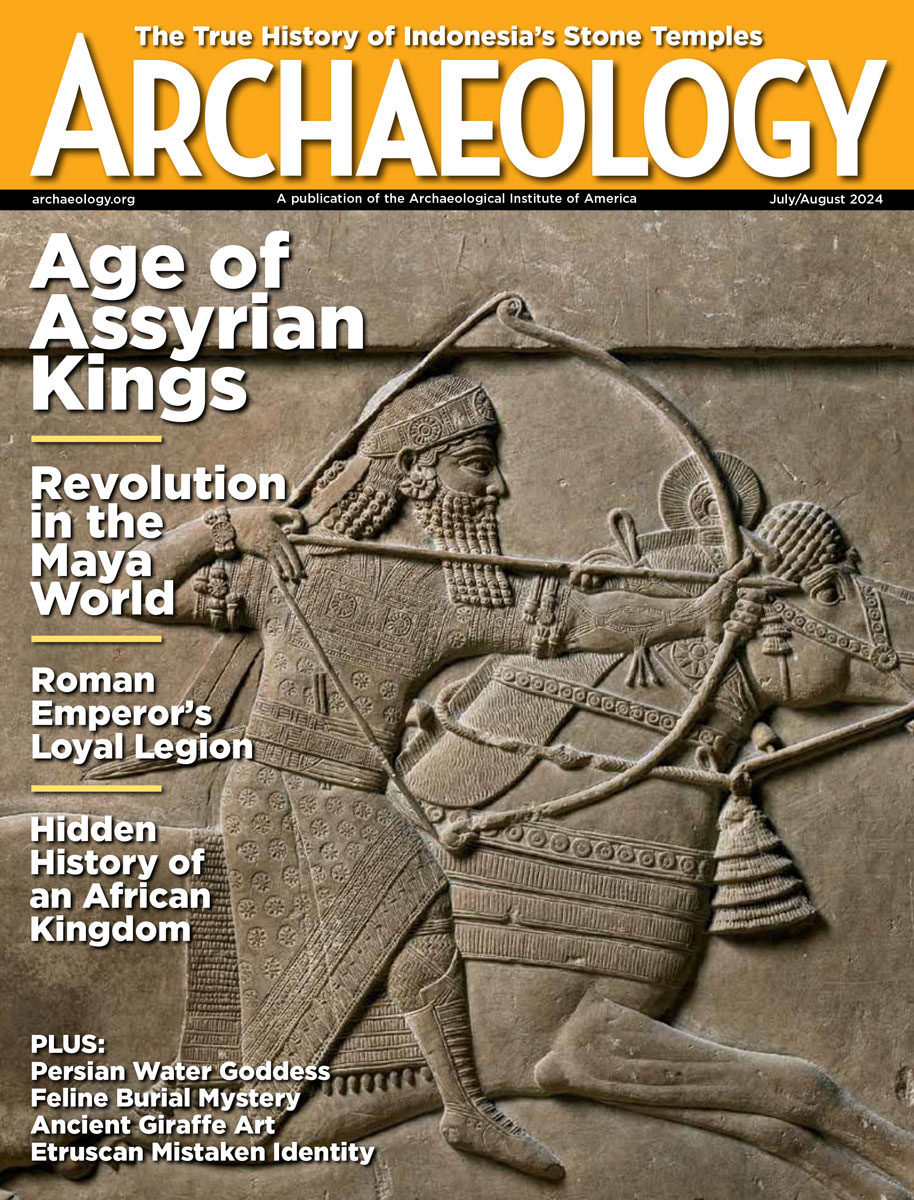Monday, July 28
July 28, 2008
A family claiming to have found millions of dollars in buried treasure in Mexico is now under criminal investigation. Federal authorities suspect the $100 bills had been buried since the 1970s and 1980s, and that the family may have stumbled upon a cache of drug money.
A statue of Lord Narayanan and his consort Lakshmi was discovered in a dry riverbed in southern India. The statue was moved by representatives from the state government, but residents of two nearby villages are claiming it as their own. Â
In the fourteenth century B.C., a Canaanite queen wrote to the Pharaoh Akhenaten, asking for protection from a marauding group known as the Apiru. Her letters, written on clay tablets, were discovered in Tel Amarna, Egypt. Israeli scholars are linking the queen’s letters to Tel Beit Shemesh, where a battle took place before the city was burned and captured. Â
A piece of eighteenth-century French pottery was found at the homestead of Louis Blanchette, who arrived in St. Charles, Missouri, in 1769. “It’s what I wanted to find, and I’m tickled,” said archaeologist Steve Dasovich. Â
“Beware of Greeks building museums,” quips this article from Bloomberg on the new Acropolis Museum in Athens and the Parthenon Marbles in the British Museum. “The British Museum has thousands of pieces of Greek treasure on display. We only want back the Parthenon Marbles,” added Athens museum director Dimitris Pandermalis. Â
Foreign ministers from Thailand and Cambodia met in Siem Reap today to try to resolve the dispute over border lands near the Preah Vihear temple. “We have discussed many points but we have not reached a solution yet,” Cambodian minister Hor Namhong said.
- Comments Off on Monday, July 28
Friday, July 25
July 25, 2008
Rock art in Western Australia is at risk of being damaged or destroyed by the booming mining and energy industries. In the 1960s, there were nearly one million panels of etchings on the Burrup Peninsula, and while the rock art was put on the National Heritage List last year, there are still no protective measures in place. “We put the biggest industrial development in the country at the same site as the biggest cultural heritage site in the country. It’s incredible,” said Robert Bednarik, who is credited with discovering the images.
Proposed changes to Environmental Protection Agency regulations would allow power plants in the U.S. to build near national parks, including the Mesa Verde cliff dwellings in Colorado. College sophomore Danielle Gonzales explains how such changes would damage the country’s parks and monuments. Â
U.S. News and World Report sums up recent DNA research and its impact on theories of human migration to the New World. “Archaeologists are used to stone tools and bones. So for us to be presented with this kind of evidence is pretty intriguing,” said Ted Goebel of Texas A&M University, who is described as “a longtime Clovis supporter.” Â
A new phase of restoration at the Parthenon will begin next year, covering its western façade with scaffolding for three years. The western side has been damaged by bullets, earthquakes, and humidity. Â
In Utah’s Skull Valley, there was a short-lived town where Polynesian converts to Mormonism lived between 1889 and 1917, when most of them returned to Oahu. Benjamin Pykles, of the State University of New York at Potsdam, is conducting the first archaeological survey of the site. “This was supposed to be a permanent settlement. Its size and the amount of money they put into it points to that conclusion,” he said.  Learn more about the artifacts recovered at the Polynesian town of Iosepa in this second article. Â
Here’s some more information on the hippodrome at Olympia, from National Geographic News.
- Comments Off on Friday, July 25









